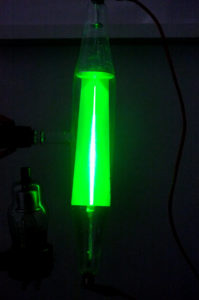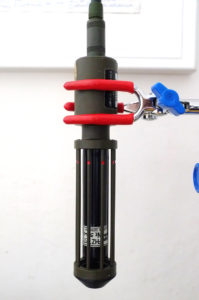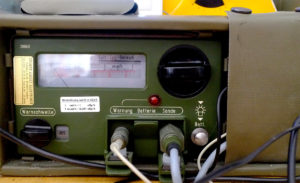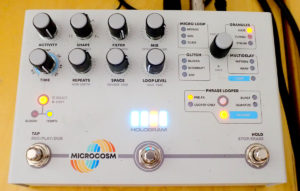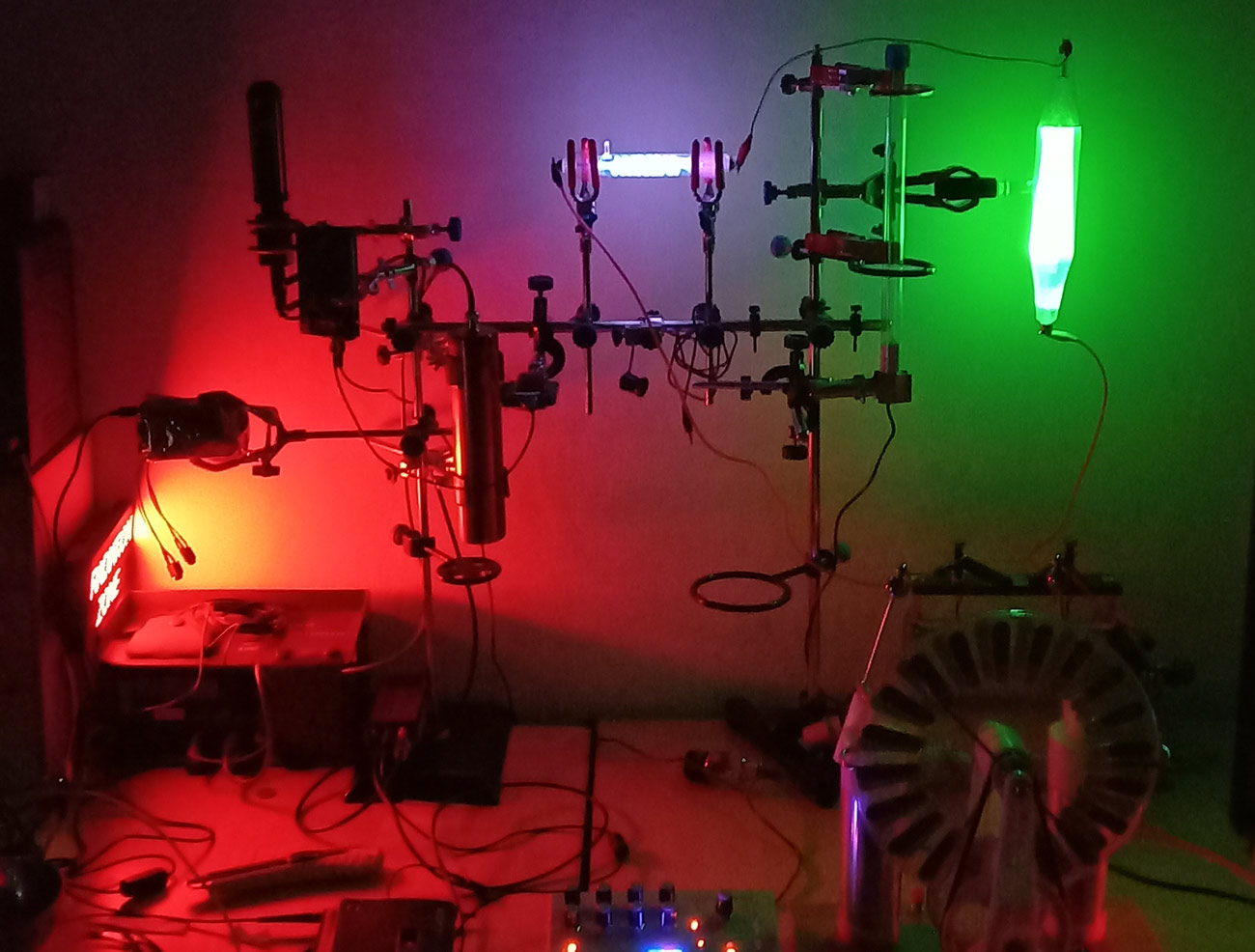
Taking inspiration from the discoveries of William Crookes and Wilhelm Röntgen, the Radiotone is a one-of-a-kind music synthesizer that uses
X-Rays to control and shape the sound.
The Radiotone is divided in four sections:
- High Voltage generation
- X-Rays generation
- X-Rays detection
- Sound synthesis
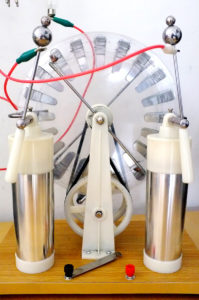
High Voltage generation
To generate the necessary high voltage the Radiotone uses an Wimshurst machine. This is an electrostatic generator developed between 1880 and 1883 by British inventor James Wimshurst. The Wimshurst machine can generate high electric potentials up to 150KV.
In a Wimshurst machine, the two insulated discs and their metal sectors rotate (hand cranked!) in opposite directions passing the crossed metal neutralizer bars and their brushes. An imbalance of charges is induced, amplified, and collected by two pairs of metal combs with points placed near the surfaces of each disc. These collectors are mounted on insulating supports and connected to the output terminals. The positive feedback increases the accumulating charges exponentially until the dielectric breakdown voltage of the air is reached and an electric spark jumps across the gap. The accumulated spark energy is increased with pair of Leyden jars , an early type of capacitor suitable for high voltages, with the jars’ inner plates independently connected to each of the output terminals and the jars’ outer plates interconnected.
X-Rays generation
Instead of creating a spark between the Wimshurst Machine terminals, these terminals are connected to a Crookes’ tube. The Crookes’ tube is an early experimental electrical discharge tube, with partial vacuum, invented by English physicist William Crookes and others around 1869-1875,in which cathode rays, streams of electrons, were discovered.
Developed from the earlier Geissler tube, the Crookes tube consists of a partially evacuated glass bulb of various shapes, with two metal electrodes, the cathode and the anode , one at either end. When a high voltage is applied between the electrodes, cathode rays (electrons) are projected in straight lines from the cathode. This is the grandfather of the television as well of the X-Ray machine.
Because the there is a very high electric potential between the cathode and the anode, the electrons in the tube are accelerated to 190.000Km/sec (0.63 c the speed of light). You may in fact think a Wimshurst Machine with a Crookes’ tube, as an hand cranked nuclear accelerator!
To generate a visible cathode ray, the Crooks’ tube has a metal plate with a small linear slot, and the plate is painted with a phosphor.
The electrons enter in the slot and hit the phosphor screen. A straight line is visible.
In a typical class experiment the cathode rays are bent (deflected) with a magnet to show that the particles that we are dealing with are electrically charged. (This is how the electron was discovered).
But because we’re dealing with VERY fast electrons there is another interesting effect. When the electrons hit the metal screen inside the tube, the particles are slowed down abruptly by the electrical field of the aluminium atoms of the screen. When breaking, the electrons emit photons with an energy which is proportional to the speed of the electrons. These photons are called X-Rays and this effect is called Bremsstrahlung (or breaking radiation). The German physicist Wilhelm Röntgen discovered the X-Rays while doing experiments with high electric potentials and Crookes’ tubes.
X-Rays detection
To detect the X-Rays generated by the tube I use a German military Geiger Counter , a Frieseke Hoepfner SV500.
This unit was built in 1987 during the cold war.
The geiger counter detects the incoming X-Rays from the Crookes’ tube and outputs a “click” sound from the earphone, each time that an X-Ray photon is detected. The earphone is coupled with a coil microphone that has a handy minijack plug.
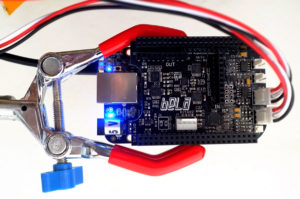
Sound Synthesis
The geiger counter sound enters into a Bela board’s audio input. This fantastic board is here programmed with Pure Data music language.
The function of the geiger counter click sound is twofold. First it must trigger the sound, then it might mutates it. The word mutation really fits the job. As a matter of facts the synthesis algorithm which I have used in the Radiotone is an evolution of the same genetic (phonosomic) algorithm which I’ve used for my Thannhäuser Gate installation. The software runs a polyphonic FM patch which is programmed with my CFTR gene (DNA). The geiger sound triggers this synthesis engine and then after a while it mutates the genetic code, thus mutating the sound.
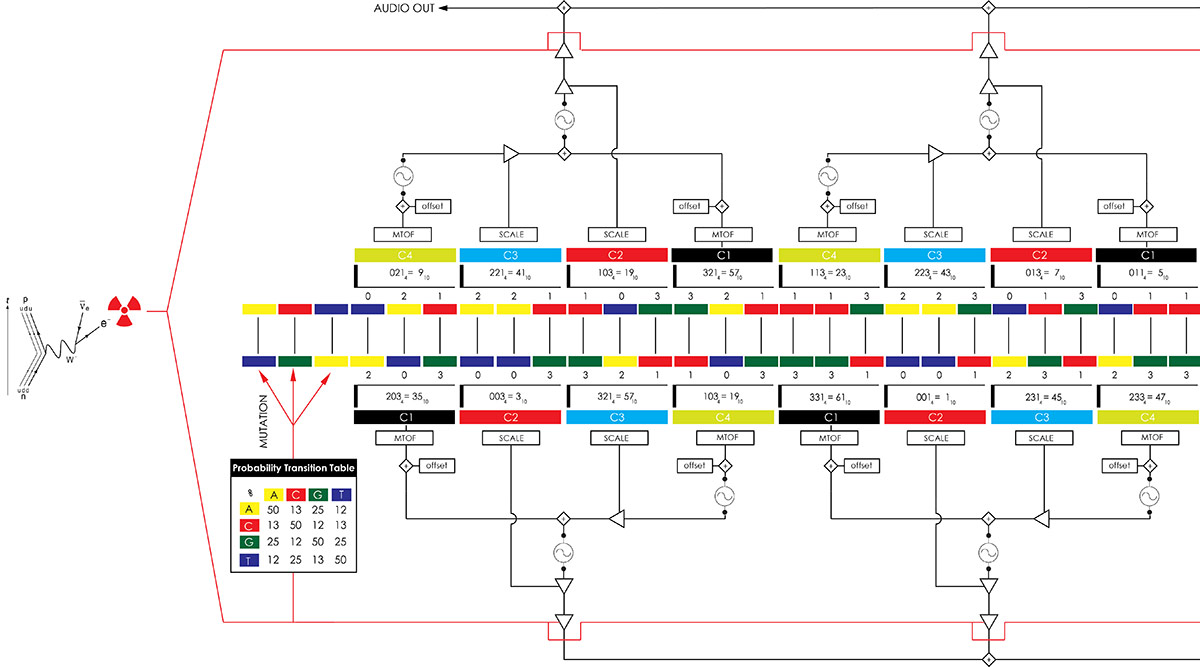
Final touch
The Radiotone sound is then processed with a popular and very funny sound effect machine, called Microcosm, by Hologram Electronics.
Safety Concerns
Dealing with ionizing radiation of course requires knowledge and proper use of the instruments.
First off, proper dosimetry is a must. I always use a Polimaster PM1610B professional active dosimeter and keep my distance from the tube.
Because we’re using a Wimshurst machine to generate the necessary electric potential, we’re dealing with µAmperes, so the intensity of the radiation is low. With a steady mid-slow use of the Wimshurst, a 10 minutes music session results in ~0.25µSv dose (the DER is ~1.5µSv/h)
Consider that a one hour flight on an airplane gives you a dose of ~3µSv and that 3.6µSv is the average dose that every person gets in 24 hours, due to natural background radiation (DER=~0.15µSv/h)
